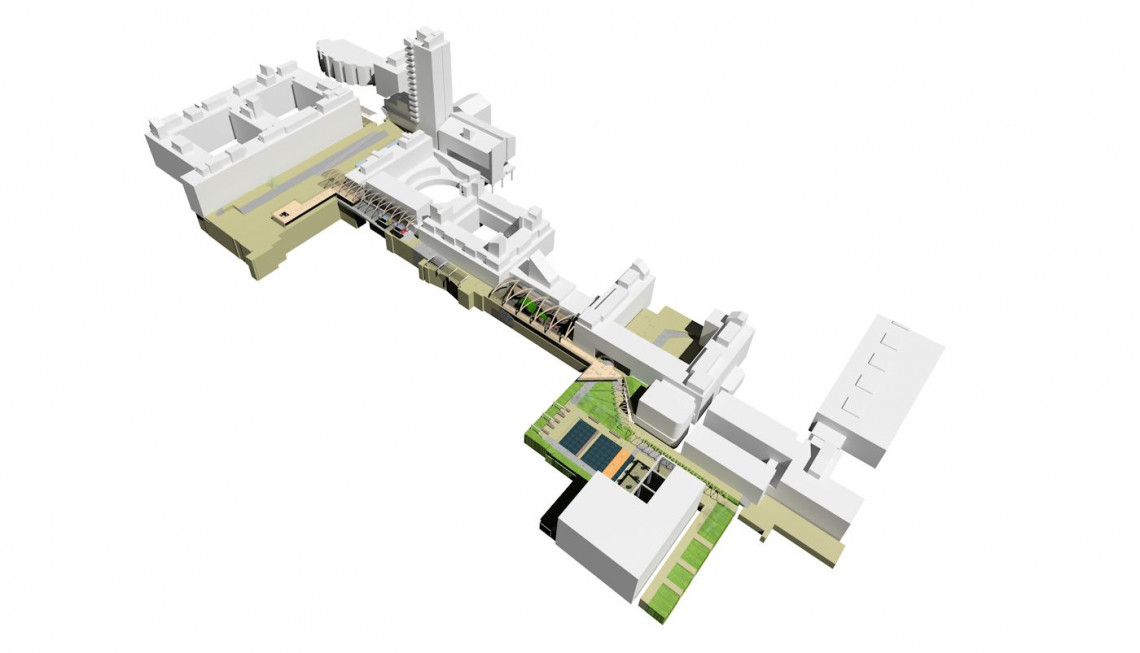
We were shortlisted in 2014 as one of five practices for the design competition to rejuvenate the campus’s principal walkway, known as The ‘Spine’- a partially covered pedestrian walkway spanning from one end of the campus to the other, originally designed (by this practice, in 1964) to allow pedestrians to walk the whole length of the campus whilst providing a degree of protection from the weather.
The RIBA ran the OJEU competition which 'received an excellent response'. The shortlisted teams were Shepheard Epstein Hunter with tf LAB, landscape architects; Gustafson Porter Ltd, Land Use Consultants with Design Engine Architects, Rick Mather Architects with Grant Associates, and White Arkitekter.
Lancaster University, one of the UK's leading universities ranked 10th in the Guardian league table, sought an innovative team to create an inspirational space where people learn, work, live and socialise, in celebration of its 50th anniversary.
We came a very close second, we understand. Congratulations to Rick Mather Architects and their team, and good luck to the University with the project.
The opening page text of our design report is reproduced below (the full report can be downloaded here) and the presentation boards and key images follow.
History
The story of ‘The Spine’ at Lancaster University begins with the original planning of the campus in the 1960s. The concept was a central pedestrian walkway running north – south through the University connecting all the original development and allowing it to expand as a unified campus, with a heart untroubled by subsequent phases of construction. The width of the spine was carefully determined to ease circulation for the proposed number of students but also narrow enough to concentrate movement and promote familiarity, social awareness and a friendly atmosphere. The north and south spine meet at a large central square which is created as the heart of the campus, but which, for the visitor arriving from the outside, can be difficult to find. Although the conceptual model for the university was an Italian hill top town a need for shelter from the elements was also recognized and canopies along the walkway provided this. So the spine became an integral narrative in the development of the University linking together the colleges a well as the faculties.
Today
The story of ‘the spine’ continues but is weakened and although fondly remembered by staff and students is in danger of being forgotten. Over the years student numbers have risen substantially as the university has expanded beyond original expectations. The Spine still provides a human scale to a campus where the scale and range of new buildings could be overwhelming. Considering the size of the overall campus today, the spine is effective in fulfilling its original concept of bringing people together and providing a central pedestrianised and partially covered walkway between the major buildings. There are, however, many problems and as ‘the building we do not talk about’ it has been a little neglected. Materials are dated and drab, the canopies are low, block views of the sky and can be claustrophobic, and drainage is impeded. Original buildings that border the spine are monotonous and entrances are hard to find, so a journey from north to south offers few memorable features to aid navigation. Highlights are often provided by the views into little east-west passageways, some which lead to other squares and others to dead ends. The basis for a very good story is still there but needs to be re-invented, reinvigorated and brought up to date.
The Future
Like all good stories ‘The Spine’ needs a beginning and an end and a plot which informs the journey. The story also needs punctuation to aid comprehension and navigation. Narrative is also essential to create a memorable experience, including variety of pace, exciting twists and turns leading through dark passages (dramatically lit) into open squares. The aim in re-writing the story is to combine all of the above ingredients to ensure the spine fulfils its original purpose and continues to connect and bring the University population together.
To be continued...























